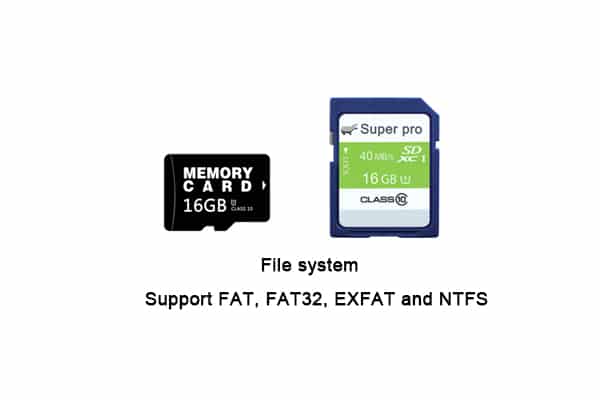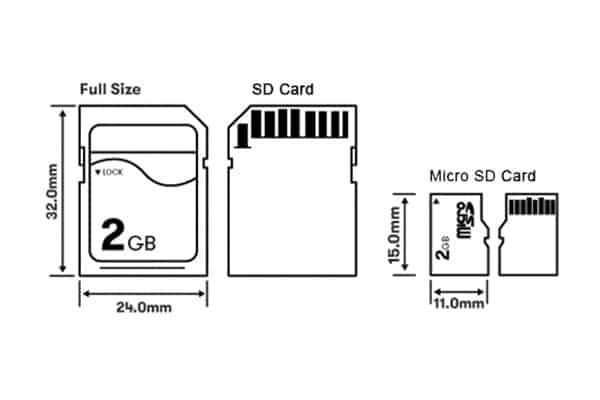Latest Posts
All You Need to know about sd cards
Introduction
SD cards are fundamental to our everyday tech. They offer a compact and efficient way to store and share data. Whether using a smartphone, camera, or gaming console, these cards boost functionality. With ongoing tech advancements, understanding SD cards’ types and features is essential. This write-up will explore everything about them to help you choose the best cards for your devices.

History and Functions of SD Cards
The late 1990s marked the evolution of SD cards. First of all, he SD Association introduced them in 1999 to cater to the need for smaller storage solutions. Then the original SD card supported up to 2 GB. In 2006, SDHC expanded that to 32 GB. By 2009, SDXC enabled storage up to 2 TB. Finally, this evolution kept SD cards relevant as technology advanced.
The Function of an SD Card
SD cards work as flash memory tools. Their non-volatile storage allows them to hold data without power. Inside, a controller pairs with NAND flash memory. When data is saved, the controller writes it into memory cells. This setup provides quick access to stored files. Speed classes help define data transfer rates, ensuring compatibility with many devices.
Applications of SD Cards
SD cards play a key role in various devices.
- Digital cameras rely on SD cards for storing photos and videos. Higher-capacity cards enhance burst shooting and allow for high-definition video.
- MicroSD cards help expand storage in many smartphones. They let users save photos, music, apps, and documents, making storage more flexible.
- Tablets often use microSD cards for extra storage. This keeps essential files and media easily accessible without depending on internal memory.
- Some gaming consoles accept SD cards for downloadable content and game storage. This feature helps gamers manage large libraries easily.
- Drones capture high-quality images and videos using SD cards. Other electronics, like smart TVs, also rely on them.
Types of SD Cards
Different types of SD cards cater to specific needs. Knowing these details can help you pick the best card for your device.
| Type | Storage Capacity | File System | Key Features | Common Uses |
|---|---|---|---|---|
| Standard SD | 128 MB – 2 GB | FAT16 | Original format; compatible with older devices. | Basic storage for legacy cameras or devices. |
| SDHC | 2 GB – 32 GB | FAT32 | Higher capacity than Standard SD; improved file organization. | Modern cameras, smartphones, and tablets. |
| SDXC | 32 GB – 2 TB | exFAT | Supports large files (e.g., 4K videos); requires compatible devices. | Professional photography, high-resolution video recording, advanced devices. |
| microSD | Up to 2 GB | FAT16 | Compact size; limited capacity. | Older mobile devices or small-scale storage needs. |
| microSDHC | 2 GB – 32 GB | FAT32 | Balances capacity and compatibility; widely used. | Expanding storage in smartphones, tablets, and action cameras. |
| microSDXC | 32 GB – 2 TB | exFAT | High-performance storage; ideal for 4K video and large apps. | Drones, modern smartphones, gaming consoles, and 4K-capable devices. |
1. Standard SD
Standard SD cards were the original format of these cards, with storage between 128 MB and 2 GB. They have a simple file system and work with devices made for this type. While less common now, they are still beneficial for basic tasks, like in older cameras.
2. Secure Digital High Capacity
With multiple storage options, from 2 GB to 32 GB, SDHC cards expand device capacity. Also, they use FAT32 for larger file sizes and better organization. Besides it, modern smartphones and cameras often support SDHC cards. Therefore, they provide a smart way to boost storage capacity.
3. Secure Digital eXtended Capacity
SDXC Cards provide 32 GB to 2 TB storage options. The exFAT file system they use accommodates larger files and improves performance. Great for high-resolution video recording and professional photography, these cards suit advanced applications. Remember that SDXC requires compatible devices. They do not function with Standard SD or SDHC.
4. microSD

MicroSD cards are tiny and lightweight, designed as smaller SD cards. You can find three main types:
- MicroSD: Typically smaller in capacity, usually less than 2 GB.
- MicroSDHC: 2 GB to 32 GB, offering a balance of storage and compatibility with most devices.
- MicroSDXC: 32 GB to 2 TB, perfect for high-performance needs, such as 4K video recording.
Choosing the Right SD Card Type
When selecting an SD card, consider the following parameters:
-
-
- When selecting an SD card, start with storage capacity. Namely standard SD cards hold less data than SDHC and SDXC cards, which offer more extensive options.
- Evaluate costs and availability. Standard SD cards can be the least expensive. In other words, SDHC and SDXC prices vary by capacity and speed. MicroSD cards are commonly available at similar prices.
- Speed is the key. Look for speed classes, particularly UHS-I and UHS-II. UHS-II cards deliver higher data transfer rates, perfect for fast photography and 4K video.
- Check your device compatibility with the SD card. For one thing, standard SD cards work with older models. For another thing, SDHC and SDXC are common in newer devices.
-
Pros and Cons of SD Cards
| Advantages | Disadvantages |
|---|---|
| Portability: Compact and lightweight, easy to carry. | Data Loss Risk: Vulnerable to corruption or accidental deletion. |
| Expandable Storage: Adds capacity to devices without replacing them. | Compatibility Issues: Older devices may not support newer formats (e.g., SDXC). |
| Cost-Effective: Affordable storage expansion compared to buying new devices. | Speed Limitations: Lower-speed cards struggle with 4K video or large file transfers. |
| Versatility: Compatible with cameras, phones, drones, gaming consoles, etc. | Physical Fragility: Small size increases risk of loss or damage. |
Advantages
Easy to Carry
SD Memory cards are small and light. You can slip several into your pocket or wallet, making it simple to have extra storage on hand.
Boost Storage Space
This card let you increase your device storage. Many smartphones and cameras support them, so you can store more without buying a new device.
Cost-Effectiveness
This storage media is excellent for expanding storage without high costs. It provides various options at different price points, so you can select what works for you.
Versatility in Various Devices
These cards are compatible with many devices, from cameras to gaming consoles. Their flexibility is a big plus for anyone looking to transfer or store data across various platforms.
Disadvantages
Risk of Data Loss or Corruption
Users may find important files lost because of card failures or accidental deletions. This risk increases when cards aren’t appropriately ejected or if they experience physical damage.
Compatibility Issues with Older Devices
Modern devices support different cards. However, older devices may have limits. Always check before using a new card.
Speed Limitations in Some Types
Not every card performs equally. Some may have low read and write speeds, affecting tasks such as HD video recording or large file transfers. You should know speed classes to pick a suitable card.
Final Thoughts
Choosing an SD card involves careful consideration. First, confirm its compatibility with your device by checking the specifications. Next, assess your storage needs. Larger capacities are ideal for high-resolution photos and videos. Speed is also important. If you regularly transfer large files or record HD videos, opt for UHS-I or UHS-II cards. Reliable brands improve durability. Look for trusted manufacturers known for their quality. Lastly, find reputable retailers to ensure you get the original product.











Leave a comment